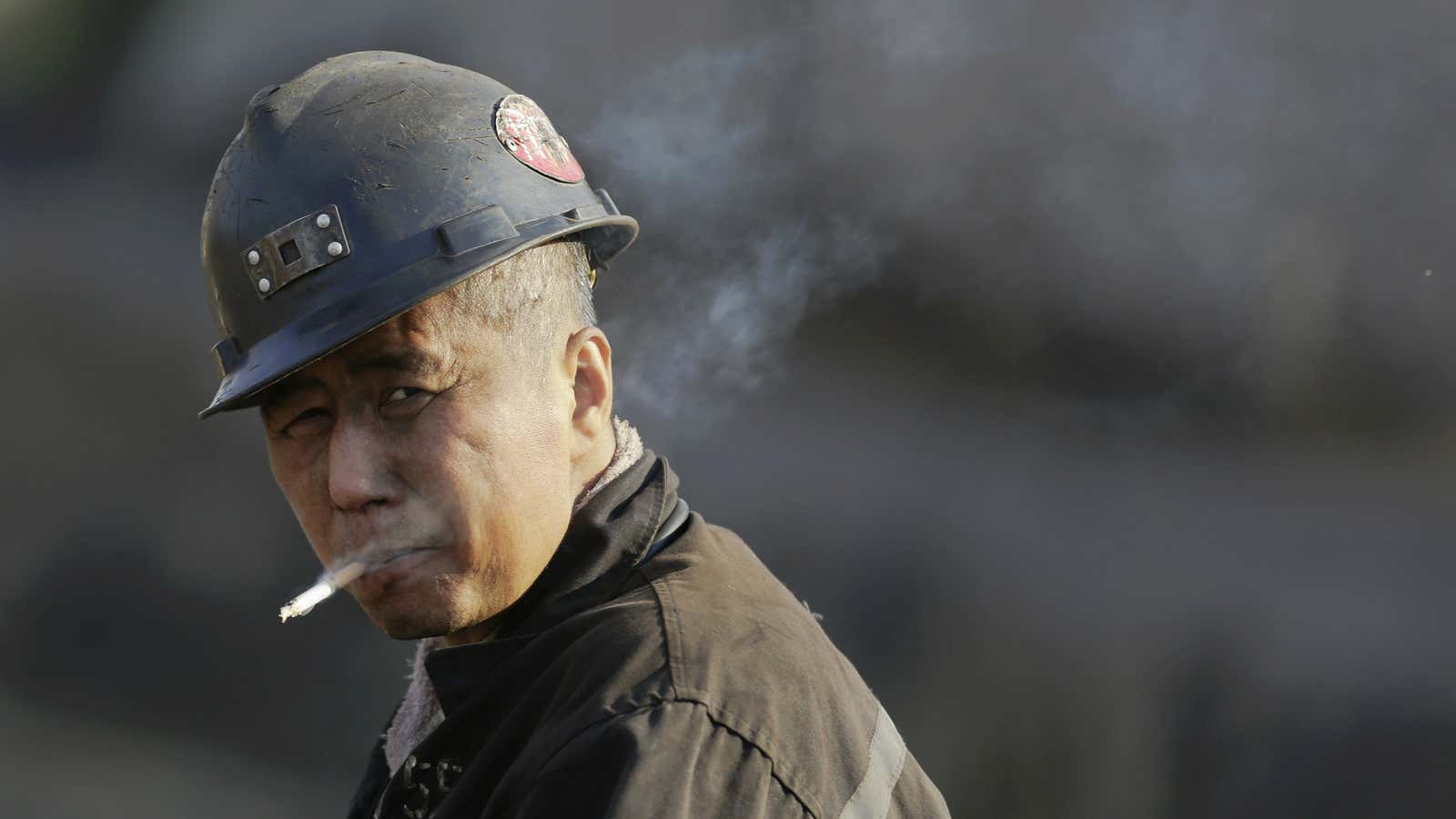On Monday, China’s minister of human resources Yin Weimin announced some bad news. To meet the demands of China’s nationwide economic restructuring, 1.8 million workers at state-affiliated coal and steel companies would lose their jobs, one of the largest single layoffs in history.
But that might just be the tip of the iceberg. Unnamed sources told Reuters layoffs in all of China’s state companies might actually rise to 6 million employees in the sector over the next two to three years. The government will earmark $23 billion to compensate the displaced workers in coal and steel alone over that time frame.
If the total layoffs are completed, China’s overall state sector workforce will shrink by 17%, down from 37 million workers as of 2013 to 31 million.
The layoffs reflect painful realities China must face as its exports to other countries slow.
After over-investing in heavy industry, the government effectively paid out of pocket to keep its struggling, state-affiliated heavy industry companies above water. The government has now decided that subsidizing heavy industry is no longer sustainable. Shifting to a consumer-oriented economy has long been a political slogan. Now it’s steadily becoming unavoidable, and millions of workers at across the country will soon find themselves out of a job.
But there’s no reason to worry, according to Chinese state media, which is under new orders to reflect the Communist Party’s point of view. A China Daily editorial described the the restructuring as ”bearable,” and argued that the country is better equipped to reabsorb displaced workers than it was in the late 1990s, when a larger restructuring hit workers at state-owned enterprises.
The enormous economic and social resources it can now mobilize and the better-developed domestic employment market mean that China’s current pressures resulting from the elimination of overproduction are no larger than those in the 1990s when widespread, large-scale reforms were launched to streamline poorly performing State-owned enterprises.
China’s precedent for managing these economic transitions has been very week. Throughout the last decade, unemployment and disgruntled workers were some of the main causes behind a ballooning number of ”mass incidents,” or semi-organized protests. Between 1993 and 2010, the number of annual mass incidents jumped from 8,700 to 97,000. The government has since stopped releasing this data.
For China’s economic restructuring, cutting the payroll will be the easy part. Appeasing millions of jobless Chinese is going to be more difficult.
